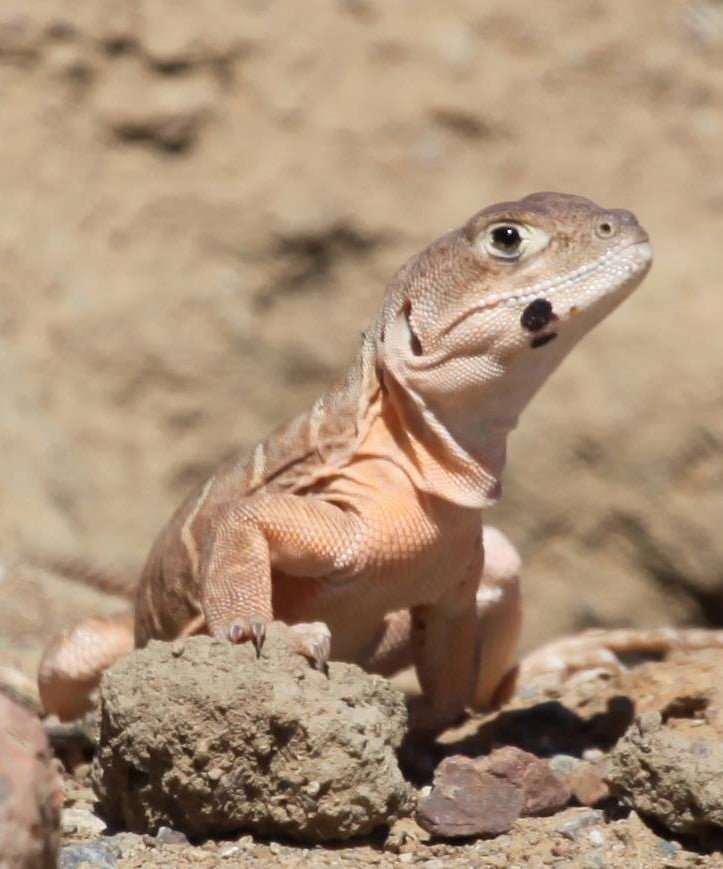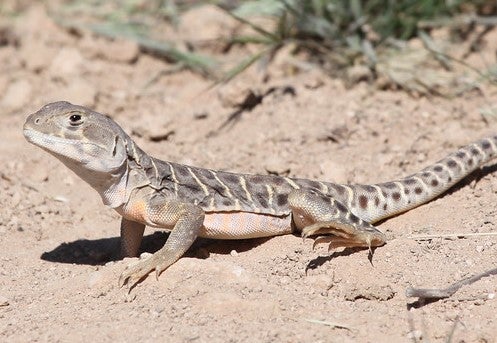
General Information: The blunt-nosed leopard lizard is a relatively large lizard. It has a long tail that regrows; long, powerful hind legs; and a short, blunt snout. Although blunt-nosed leopard lizards are darker than other leopard lizards, their undersides are white. They have rows of dark spots across their backs, alternating with white, cream-colored or yellow bands. The Recovery Plan for Upland Species of the San Joaquin Valley, California provides more details about identification.
Category: Focal species
Surface water needs: None
Federal listing status: Endangered
State listing status: Endangered, Fully Protected
Potential Conservation Actions:
- Create grazing plans
- Recontour ground
- Avoid disking
- Plant natives
Fun Fact
The skin color of the blunt-nosed leopard lizard varies according to what they eat and the type of soil in their habitat, ranging from yellowish or light brown to dark brown.
Habitat
This species spends most of its life in terrestrial habitats such as sparse grasslands and scrub in valleys or canyon floors. They will tolerate some light development. Shrubs are important for blunt-nosed leopard lizards, as they provide cover and opportunities for perching. They take shelter or cool down in small rodent burrows. When it comes to the size of the habitat, the larger the better – blunt-nosed leopard lizards are most likely found in suitable habitat sizes of over 1,200 acres.

Grassland

Scrub and chaparral

Light development areas
Disturbance and stressors
Housing development, agricultural cultivation, oil and gas development, and solar development contributed to the decline in blunt-nosed lizard populations. Additionally, above-average precipitation decreases species survival while below-average precipitation decreases species reproduction.

Housing development

Agriculture development

Solar development

Oil and gas development


Sources: Earthsendangeredcreatures.com, LPFW.org, U.S. Fish and Wildlife Service 2017 and 2020
Photo credits: U.S. Fish and Wildlife Service, University of California Davis, California Department of Fish and Wildlife